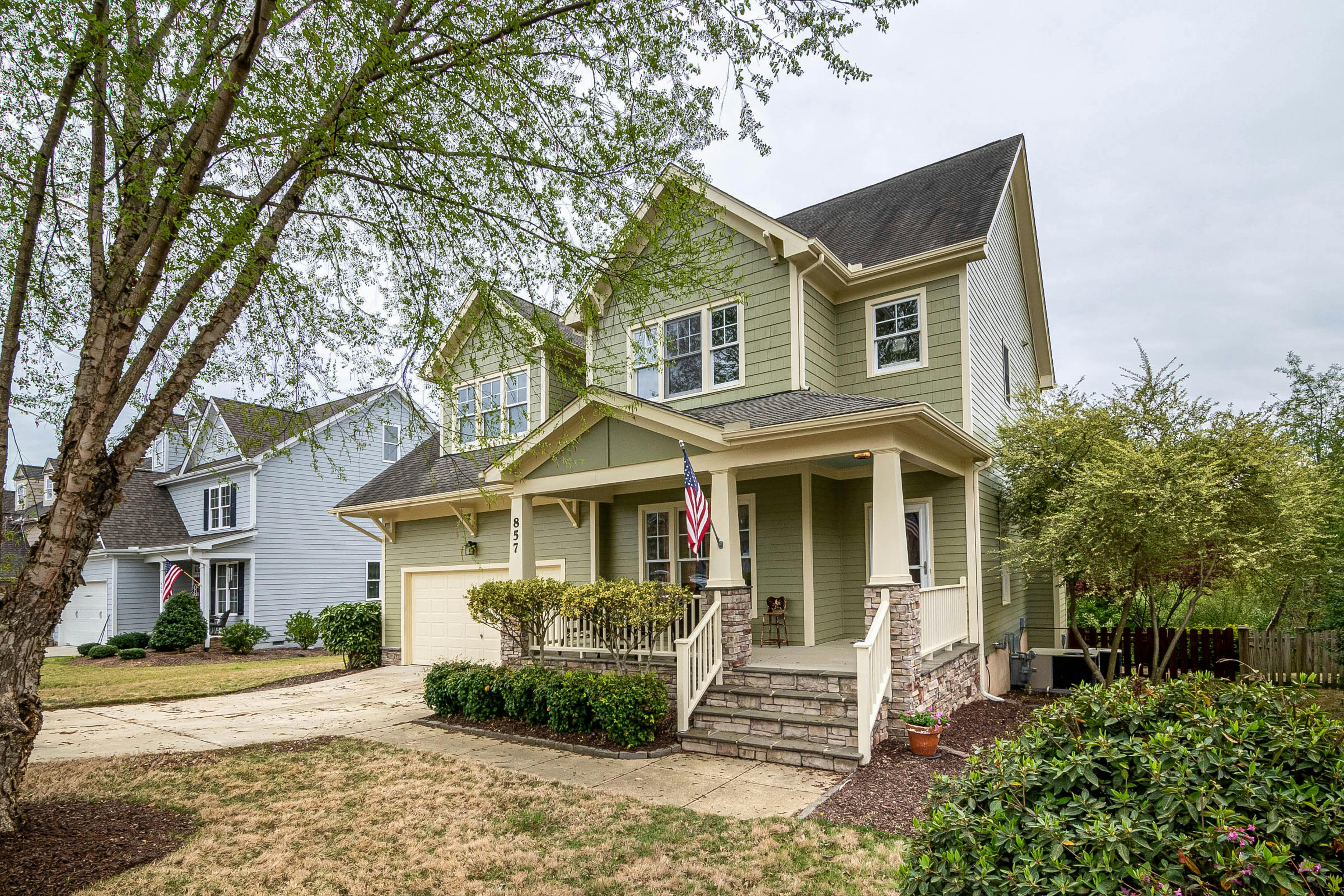As the population ages and more people live with physical disabilities, housing and community development must be re-examined. Inaccessible homes make daily life difficult for people with reduced mobility due to illness, accident or age. Visitors to inaccessible homes face the danger of falling on the front steps, the worry of not being able to get into the bathroom, and the embarrassment of being carried down the stairs. An affordable, sustainable and inclusive design approach to integrating basic accessibility features into all new construction homes is a movement known as Visitability.
In 1988, the Fair Housing Amendments Act created affordable units in all new multi-family housing apartments and condominiums with four or more units. In 1990, the Americans with Disabilities Act greatly increased accessibility to all government and public buildings. But detached single-family homes and townhouses, where the majority of the population lives, are the last part of the built environment not covered by federal law. There are no accessibility codes. To this day, private and semi-detached houses continue to be built with the same basic accessibility barriers: steps at all entrances and narrow doors to bathrooms.
In an effort to pass legislation for accessibility in new single-family home construction, Eleanor Smith, the founder of Concrete Change, started the Visitability Movement in the US. The movement calls for three basic accessibility needs to be met:
* An entrance without steps on a route accessible from a driveway or public sidewalk.
* Entrances with a minimum clearance of 32″.
* One half bath on the main floor to accommodate a wheelchair.
If these three requirements are met in the construction of each new home, future adaptations for specialized needs can occur as necessary. Visitability features make it easy for people with reduced mobility to visit friends and family and stay active in their communities.
COST OF VISIBILITY
Over the life of a home, 25-60% of all new homes will have a resident with mobility issues. This can be muscle weakness, poor balance, arthritic stiffness, or confinement in a wheelchair. 95% of all new houses are built with steps at every entrance and narrow doors to the bathroom. Due to architectural barriers, the risk of falling for the homeowner is greatly increased and the success rate of first responders can be compromised during medical emergencies.
In 2005, 1.8 million Americans age 65 and older were treated in emergency rooms for injuries caused by falls, and 460,000 were hospitalized. 60% of all nursing home residents enter these facilities directly from hospitals after a fall, stroke, or heart attack. Since most homes have steps at all entrances and narrow bathroom doors, it can only be assumed that a large number of people do not return home after accidents due to lack of accessibility.
Below is a cost comparison of Visitability integrated into a new home versus Visitability retrofitted into an existing home. The cost of the nursing home reflects the extreme expense of “doing nothing.” (Maisel, Smith, & Steinfeld, 2008, “Increasing Access to the Home: Designing for Visitability”)
Construction of visitability of new houses
* Step-free entry on concrete slab: add $100
* Entry over crawl space or basement – add $300-$600
* 34″ door: add $2 to the cost of a 32″ door
* Average cost of visitability features, by region: add $98 to $573
* Average cost for Universal Design features – add 1% to total project cost
Modernization of the visitability of the existing home
* Step-free entrance -add $3,300
* Enlarging interior doorway: add $700 per doorway ($22 for a drop hinge)
* Home Elevator: add $15,000-$25,000
Nursing Home Costs
* Nursing home for individuals: $85,000 per year
* Nursing home for US$122 billion in 2005 (60% of the cost borne by the public through Medicare and Medicaid)
* Cost of falls among the elderly by $19 billion in direct medical costs (Maisel, Smith, & Steinfeld, 2008)
LEGISLATION
Cities and towns across the country are gearing up to help their ever-growing senior populations. With affordable senior housing in short supply and the desire of most seniors to stay in their homes, home-based programs are at the forefront: meals on wheels, home health care, hospice care in home, physical therapy at home, transportation from home. But for home-based programs to be successful, basic accessibility must be provided in the home. Visitability in private homes is crucial for the safety and social sustainability of older adults with mobility problems. Without the independence to enter or leave the home or to use the bathroom when necessary, older adults can become isolated, depressed and ill. Visitable homes are necessary for the safety and that of everyone: the elderly, the physically disabled, visitors, caregivers and lifeguards.
In the late 1980s, Eleanor Smith of Concrete Change began lobbying Atlanta homebuilders to incorporate Walkable features into their new homes, but was met with significant opposition. Habitat for Humanity listened and today there are over 800 Visitable Habitat homes in the Atlanta area.
1992- Atlanta Visitability Ordinance
Atlanta became the first city to adopt a visitability ordinance that requires all builders of new single-family homes, duplexes, or triplexes, who receive any financial benefit from or through the city, must meet several basic accessibility requirements, including at least one zero step. proper entryway and interior door widths.
2002- Pima County, Tucson, AZ Inclusionary Housing Design Ordinance
Pima County adopted the first ordinance in the nation requiring no-step entry for single-family homes with door openings at least 34″ wide, lever-operated door handles, reinforced bathroom walls for grab bars, non-return switches 48+ inch hallways and 36″ wide throughout main floor.
In 2003, the Southern Arizona Home Builders Association sued Pima County over the legality of the Visitability Ordinance. In a unanimous decision, the Arizona Court ended efforts by Tucson developers to strike down a Pima County law requiring minimum driveways on newly built single-family homes. By 2008, Tucson, AZ had built 15,000 visitable homes.
2004- Visitability Code, Bolingbrook, IL
Bolingbrook initially passed a voluntary visitability ordinance that was unsuccessful with homebuilders. To enforce homebuilders, Bolingbrook enforced the ordinance requiring all new homes to be built to visitability standards:
* A minimum of one zero step input
* Entrances with 32″ clearance
* A bathroom on the main floor that will accommodate a wheelchair
Bolingbrook currently has 3,600 single-family homes that can be toured.
Inclusionary Housing Design Act of 2009
US Representative Jan Schakowsky (D-ILL) introduced legislation that would apply visitability standards to all new single-family homes and townhomes that receive federal funds. Currently, 95% of new single-family homes and townhomes built with federal assistance do not incorporate accessibility features, making it impossible for many people with disabilities to live in or visit them. Representative Schakowsky reintroduced the bill in 2010.
Since the induction of the 1992 Atlanta City Ordinance, more than 50 ordinances of varying quality have been passed across the country. The legislation has resulted in more than 30,000 visitable homes built for the open market, regardless of whether or not the first occupant has a disability. States whose cities are adopting visitability ordinances or voluntary programs are: GA, FL, TX, VA, VT, MN, NM, KN, IL, OR, KY, NJ, MI, PA, OH.
ICC/ANSI A117.1, the accessibility standard referenced by most building codes in the US, is currently developing a Type C section that includes technical design criteria for visitability. This will provide an accessibility model that can be adopted in new single-family homes and clarify the design of a step-free entry, accessible bathroom, and accessible doors. The standard can be referenced by laws and visitability programs, thus promoting uniformity in applications and helping in its interpretation. Note that the IBC will not require Type C dwelling units. If a jurisdiction or state chooses to require visitability on single-family dwellings, the Type C unit criteria will be available for adoption for reference. The 2010 edition of ANSI A117.1 will contain the specifications for Type C (visitable) dwelling units. (Maisel, Smith, & Steinfeld, 2008, “Increasing Access to the Home: Designing for Visitability”)
References:
Jordana Maisel and Edward Steinfeld, Buffalo, NY, IDEA Center and Eleanor Smith, Concrete Change, Atlanta, GA, “Increasing Accessibility to the Home: Designing for Visitability”
related links
IDEA Center: http://www.udeworld.com
Concrete Change: http://www.concretechange.org










